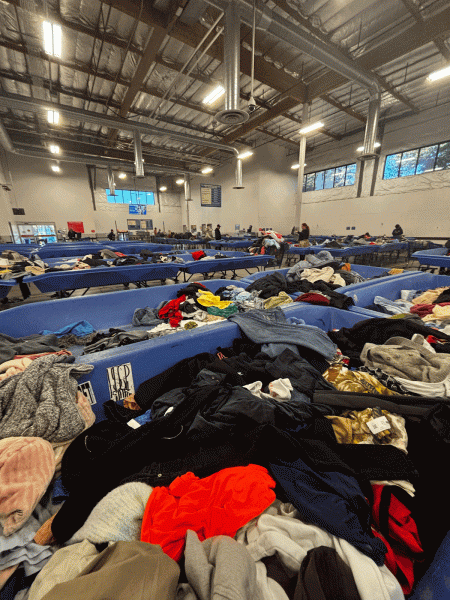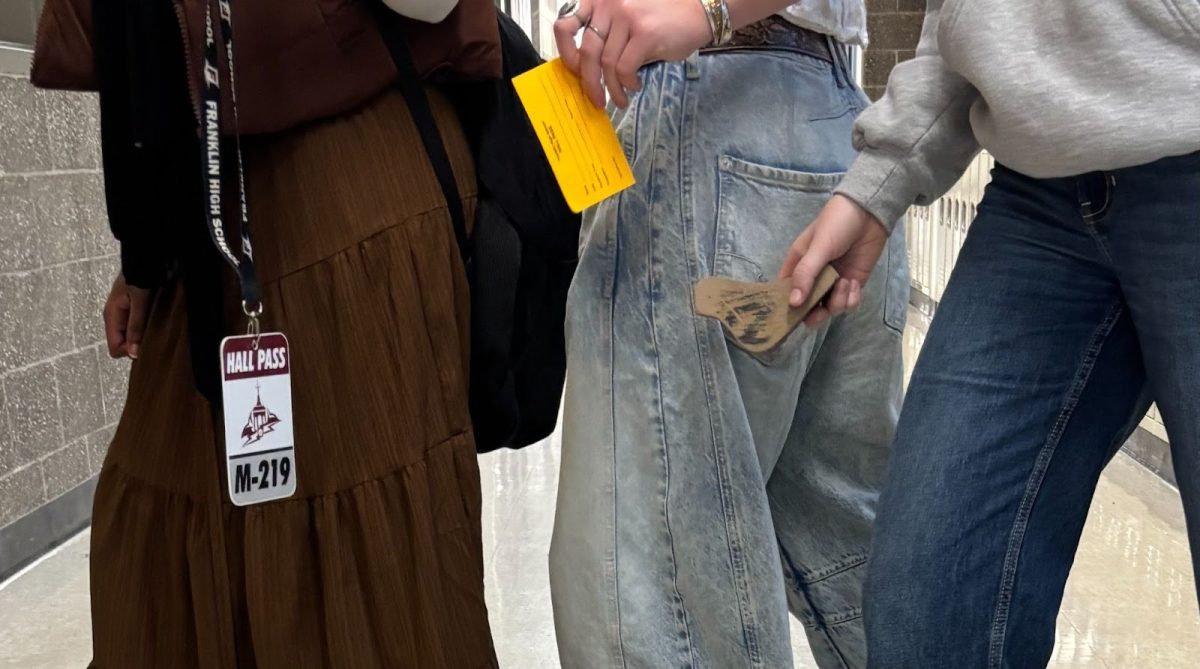
Every weekend, as early as 7:45 a.m., an extensive line forms outside the doors of the Goodwill Bins — often referred to as “the bins.” This line is largely occupied by teenage boys hoping to find vintage clothing items to resell. In the past few years, reselling has gained popularity, especially among high school students as a highly profitable job. Teenage vendors have developed a persona on social media, and are popularly referred to as “Depop Demons.”
Depop is an online site and app where many people buy and sell used clothing. Vendors create accounts where they can advertise their merchandise and sell to buyers all via electronic transactions. Many sellers find Depop useful because it allows them to promote their clothes and find buyers all from the comfort of their respective homes. For many teenagers, between balancing school and other extracurriculars, having a formal job can be too strenuous. The informality of Depop allows it to be more like a hobby that also brings in a somewhat stable source of income.
Some “Depop Demons” go as far as to shop at the bins every weekend. You may see them lined up on the peeling yellow line, earbuds in, head down, waiting for the next bins to be brought out. Once the alarm goes off, these “Depop Demons” begin digging through the large bins as quickly as possible, throwing the unwanted items to the side.
Reselling on websites and apps like these has created an alternate experience to online shopping. Unlike the “traditional” online shopping, Depop, eBay, and Etsy have created an experience that could be described as online thrifting. Additionally, having an interactive aspect with the seller generates a social feature to online shopping. “[Depop] makes it really easy to sell because it takes out shipping fees, first of all, which is really cool, [and] the layout that they have … does everything for you … and then you just upload pictures,” explains Osmond or Ozzie Montgomery, a junior at Franklin and avid Depop user.
While each vendor has their own methods, Montgomery says that he finds almost all of his inventory on Whatnot, a live auctioning app. Some days he will spend hours on the app, buying masses of clothes for a fraction of the resell price. The clothing is then mailed to his house, where he lists it on Depop. He continues to reveal that his stock from Whatnot regularly rewards him with a 300% profit. He also goes to the Goodwill Bins and other vintage stores; he even goes as far as to simply “drive around the streets, and look for free stuff.”
Many resellers echo that their profit directly correlates to the amount of effort they put in. When Montgomery was at his peak of reselling, he would make up to $200 a week. He explains that now, he spends much less time thinking about it and actually working to find inventory to sell.
Two passionate resellers at Roosevelt High School, Julian Rys and Francis Craig, while looking for merchandise at the bins, explain how they see their selling as a “side hustle” and not something that could be a profitable career. On the other hand, Isaiah Dixon, a junior at Stayton High School, argues that the percentage of profit earned from items found at the bins and on cheap apps like Whatnot makes it a worthwhile option. Regardless of its credibility as a reputable career path for many teenage vendors, the main persuasion to join the reselling business is profit.
Montgomery began reselling after seeing a friend making hundreds a week and wanted to get in on the opportunity. He explains that currently most of his earnings go towards fueling his boba addiction, stating that he gets it “almost every day.”
Finding items that will sell is arguably the hardest part of reselling. Current fashion trends shape what Montgomery shops for. In order to prepare pieces that will sell, he will search for vintage and name brand items. Carhartt, Wrangler, Juicy Couture, Dickies, Chrome Hearts, and Affliction are just some of the most sought out brands to find. Sophomore at Clackamas High School, Asher Gibeau, however, explains that his personal style starkly influences the items he will resell. “If [the clothes] fit me, then I’ll keep it, but if it doesn’t I’ll sell it.” Montgomery mirrors this statement, saying that if he lists an item on his Depop account, but hasn’t sold it yet, he will wear it until it gets sold. “That’s another really fun thing about it [reselling], you just always get a changing wardrobe.”
Beyond just name-brand clothes, vintage and 1990s-2000s clothes are highly searched for. Dixon says that he typically tries to identify a year, usually in the early 2000s or before, and “always look[s] for a made in the U.S.” tag. Montgomery agrees, noting that while trends come and go there are some universal things, like vintage skater brands that consistently sell well.
When asked if he had any advice for anyone interested in reselling, Montgomery emphasized the importance of taking quality photos for a curated and aesthetic feed. “Only take good pictures, [use] proper lighting, always fold your clothes out, and press them down … [to] get all the wrinkles out.”
Teenagers all over the state have found that reselling can be an extremely rewarding pastime for them. Dixon enjoys the social aspect of it, describing weekend road trips with friends to thrift stores around Salem, Portland, and Silverton. “We go on trips together and there’ll be like five or six of us usually.” He continues, expanding on how successful it has been for him.
While requiring dedication, he is able to spend that time with friends, making it worthwhile.



































